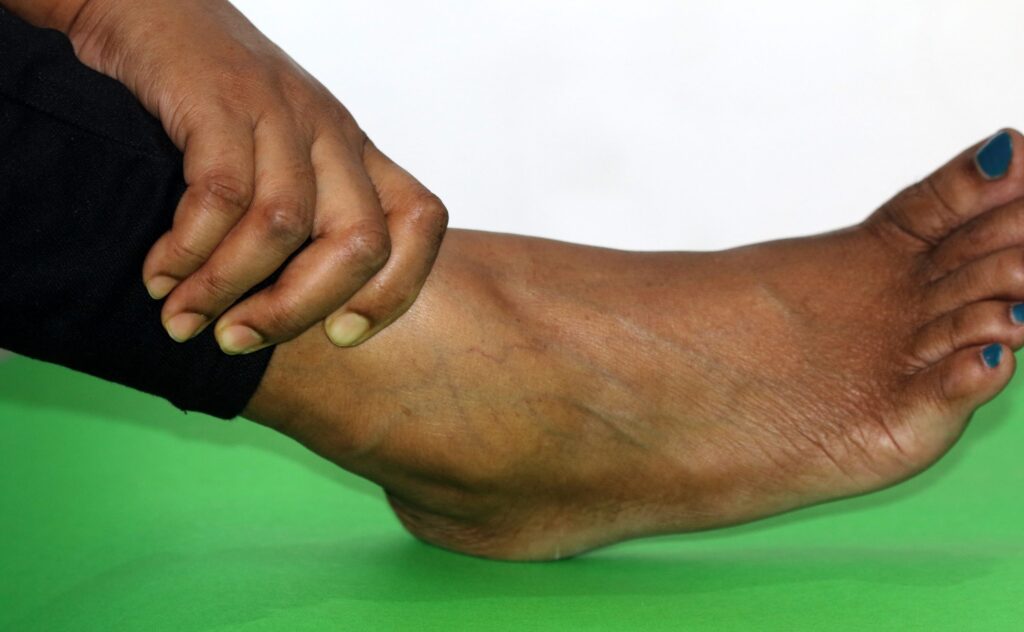An ankle fracture happens when one or more bones in your ankle joint break. This common injury, often caused by trauma or accidents, typically results in severe pain, swelling, and difficulty walking. Proper treatment is key for full recovery. Ignoring a fractured ankle or delaying care can lead to complications, affecting your mobility and overall quality of life. Here’s information on the different types of ankle fractures, treatment options, and the risks associated with leaving fractures untreated:
What Are Some Different Types of Ankle Fractures?
The ankle joint is a complex structure made of three bones (tibia, fibula, and talus) and supported by multiple ligaments. Because of this complexity, fractures can vary significantly in their severity and type. Each type of ankle fracture demands a different approach to treatment. A thorough evaluation by a foot and ankle doctor is necessary to identify the type of fracture and develop an effective treatment plan. Some common ankle fractures include:
- Lateral Malleolus Fractures: The most common type, this affects the outer knob of your ankle (fibula).
- Medial Malleolus Fractures: A fracture of the inner ankle bone (tibia).
- Bimalleolar Fractures: When both the inner and outer ankle bones are broken.
- Trimalleolar Fractures: A severe injury involving breaks in all three malleoli (inner, outer, and back of the tibia).
- Pilon Fractures: A break at the roof of the ankle joint (lowest part of the tibia), often caused by significant trauma.
What Are The Usual Treatment Options?
Treating fractures of the ankle involves assessing the severity of the injury and properly aligning bones to promote healing. For many minor or less severe ankle fractures, the RICE method (Rest, Ice, Compression, and Elevation) is an effective first line of care:
- Rest the injured ankle to prevent further damage.
- Ice the area to reduce swelling.
- Compression bandages are used to stabilize the injury.
- Elevate the foot to manage inflammation.
Surgery
Surgery becomes necessary for displaced fractures, where bones are out of alignment. Procedures like an open reduction and internal fixation are used to realign the bones and secure them with metal screws, plates, or wires. This promotes proper healing and minimizes the risk of long-term complications.
Physical Therapy
Non-displaced fractures, where bones remain correctly aligned, often heal with the help of immobilization tools like walking boots, braces, or casts. These support the bones while allowing the injury to heal naturally. Once the fracture has healed, physical therapy is fundamental to restore strength, flexibility, and mobility. Tailored exercises and rehabilitation programs help patients return to their regular activities safely and more efficiently.
What Happens When Fractures Aren’t Treated?
Failing to treat an ankle fracture or delaying care can result in serious complications. Untreated ankle fractures often escalate into long-term complications like discomfort, misaligned bones, and more. Here’s what you should know about delaying ankle treatment:
Longer Recovery Time
When a broken bone isn’t properly supported or aligned, it takes much longer to heal. While a typical fracture may heal in 12–16 weeks with treatment, untreated fractures might linger for months or even become chronic injuries that never fully heal. This extended period of immobility may lead to muscle atrophy and joint stiffness.
Permanent Damage
Improper alignment of fractured bones can permanently alter the structure of your ankle joint. This misalignment may result in joint deformity and conditions like arthritis, making everyday activities, like walking or climbing stairs, a painful ordeal. Severe cases might eventually require corrective surgery.
Impacts on Mobility
Untreated fractures can significantly compromise your mobility and balance. Even if the bones heal on their own, improperly aligned fractures might weaken the ankle’s support. This can lead to instability, persistent ankle pain, and difficulty performing basic daily movements. People with untreated fractures may struggle to regain the functionality they had before the injury.
Get Timely Care For An Ankle Fracture Today
Ankle fractures are more than just a painful inconvenience. Left untreated, they can lead to prolonged recovery times, permanent damage, and serious mobility issues. The key to avoiding these complications is timely and proper care. If you’re experiencing symptoms like severe ankle pain, swelling, or difficulty walking, seek advice from a foot and ankle doctor immediately. Don’t wait to get the relief you need. If you’re unsure about your next steps, book an appointment with a specialist now to explore treatment options.

